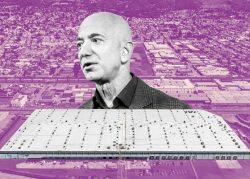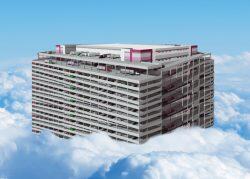Industrial real estate made history in the third quarter as e-commerce and other tenants grappled for limited U.S. warehouse space.
The segment logged 159 million square feet of net absorption — the amount of space newly occupied minus the amount vacated. It was the highest quarterly total since 2008, Transwestern said in a report.
The third-quarter gain pushed the net absorption total over the past year to more than 540 million square feet — the first time ever the metric has surpassed 500 million square feet over a 12-month period.
Vacancy fell to 4.7 percent, and in California’s Inland Empire and New Jersey’s Orange County it was just 3 percent. The tight market stems in part from Amazon and other internet retailers’ leasing warehouse space to ship more stuff to more customers faster than ever.
Read more


The low vacancy signals the need for “creative property strategies,” said Matthew Dolly, Transwestern’s research director. “The fourth quarter will further test the resiliency of the industrial sector, as ongoing supply chain issues will be exasperated during what is anticipated to be a strong holiday spending season, and could slow new and in-progress industrial projects.”
Industrial asking rents posted a new quarterly high of $7.11 per square foot, up from $6.98 in the second quarter. More than a third of the 44 markets the firm tracks saw double-digit percentage gains year-over-year.
Higher rents have made redevelopment prospects more attractive, even in rapidly growing markets such as Savannah, Austin and Pennsylvania’s Lehigh Valley, the firm said.
Some 637 million square feet of industrial warehouses are under construction across the country — almost double the volume of five years ago.
Investors continue to jockey for dominance in commercial real estate’s hottest segment. This month, a group of investors led by Singaporean sovereign wealth fund GIC purchased 328 U.S. industrial properties for $6.8 billion, one of the largest industrial deals ever.
